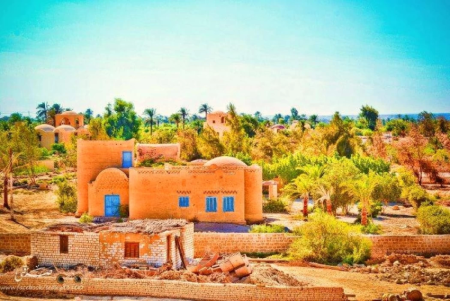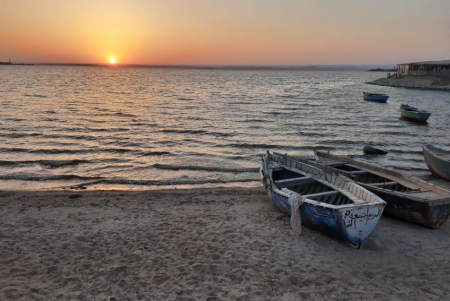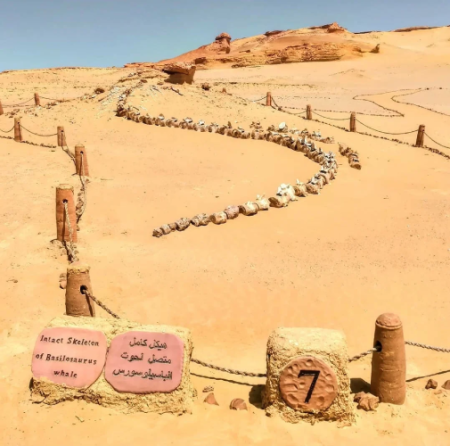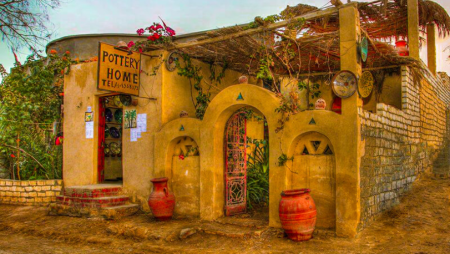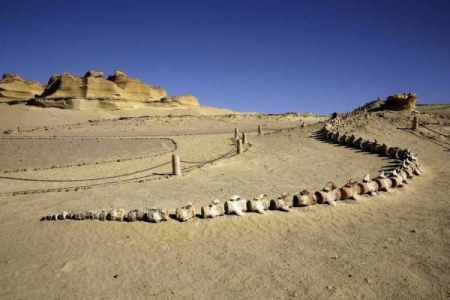Wadi El Rayan

Wadi El Rayan: Egypt's Hidden Natural Paradise in the Western Desert
Wadi El Rayan is one of Egypt's most captivating natural wonders, nestled deep within the Fayoum Oasis. This protected area, famous for its stunning waterfalls, serene lakes, and unique desert landscapes, offers travelers a one-of-a-kind blend of adventure, tranquility, and ecological marvels. As one of the country’s most beautiful and diverse destinations, Wadi El Rayan attracts nature enthusiasts, photographers, and adventure seekers alike. The reserve is home to rare wildlife, ancient geological formations, and some of the most breathtaking scenery in the Middle East.
Located about 75 kilometers southwest of Fayoum City, Wadi El Rayan spans an area of roughly 1,759 square kilometers and includes two man-made lakes created to absorb excess agricultural drainage water. The resulting landscape forms an enchanting contrast between the blue of the water and the golden hues of the surrounding dunes. Visitors who set foot here are instantly mesmerized by its peaceful charm and raw natural beauty. Whether you're planning a weekend escape from Cairo city or seeking an off-the-beaten-path adventure, this natural reserve never fails to impress.
In recent years, Wadi El Rayan has become a key highlight in various Egypt Travel Packages thanks to its unforgettable natural experiences. With its pristine lakes, extensive sand dunes, and the famous Wadi El Rayan Waterfalls – the only waterfalls in Egypt – it delivers a fascinating combination of excitement and serenity. From sandboarding to wildlife spotting, the region offers endless opportunities for every traveler to connect deeply with Egypt’s natural heritage.
Geographical Location and Ecological Importance of Wadi El Rayan
Wadi El Rayan lies within Egypt’s Western Desert, approximately 65 kilometers southwest of Fayoum Depression. It’s a part of the larger Fayoum Governorate, an area known for its ancient civilization and agricultural fertility. The reserve plays an essential role in maintaining ecological balance, acting as a refuge for endangered species and migratory birds. The lower lake sits about 43 meters below sea level, making it one of the lowest points in Egypt.
The creation of Wadi El Rayan dates back to the 1970s, when agricultural drainage water from Fayoum was redirected into the desert depressions, gradually forming two freshwater lakes. Over time, these lakes became a thriving habitat for various plant and animal species, including the endangered slender-horned gazelle. The area’s geological formations reveal millions of years of Earth’s history, linking Wadi El Rayan closely with the nearby wadi al hitan, or Valley of the Whales, a UNESCO World Heritage Site known for its ancient whale fossils.
The Iconic Wadi El Rayan Waterfalls
The Wadi El Rayan Waterfalls are a spectacular sight, connecting the upper and lower lakes through a natural channel. They are the only waterfalls in Egypt and a symbol of Fayoum’s natural beauty. The cascading water, especially during sunset, paints a mesmerizing picture against the desert backdrop. Visitors can enjoy picnic spots nearby, take scenic photographs, or relax while listening to the rhythmic sound of falling water. These waterfalls are not only a visual delight but also a crucial part of the local ecosystem, sustaining aquatic life and providing a cooling microclimate in the desert’s heart.
Adventure Activities and Outdoor Experiences
Adventurers find Wadi El Rayan a thrilling escape from the urban bustle. The vast dunes invite travelers to try sandboarding, while the surrounding desert offers incredible trekking and 4x4 off-road safaris. Many include Wadi El Rayan in their Egypt Desert Tours itineraries, combining it with nearby attractions such as Qarun Lake and Tunis Village Faiyum. Visitors can also enjoy birdwatching, horseback riding, and camel tours, making it a versatile destination ideal for families, photographers, and eco-tourists.
Flora and Fauna of Wadi El Rayan
The reserve is a biodiversity hotspot featuring diverse desert flora and fauna adapted to its arid environment. Tamarisk, acacia, and desert grasses thrive along the lakeshores, while migratory birds such as flamingos, herons, and ducks frequent the area during winter months. Wadi El Rayan also protects several desert animals, including the fennec fox, sand cats, and gazelles. Conservation efforts are ongoing to preserve these fragile ecosystems from overgrazing and human activity. For those interested in ecological tourism, visiting this reserve provides an intimate look at Egypt’s environmental diversity far beyond the pyramids and temples.
Best Time to Visit Wadi El Rayan
The ideal time to visit Wadi El Rayan is between October and April, when temperatures are mild, and the scenery is most inviting. Summer months can become extremely hot, making outdoor adventures more challenging. Early morning or late afternoon visits are recommended for photography, as the golden light enhances the natural beauty of the dunes and lakes. Travelers often combine their trip to Wadi El Rayan with excursions to Wadi El Hitan Egypt to explore prehistoric fossils, or to the artisan hub of Tunis Village to witness traditional pottery-making.
How to Reach Wadi El Rayan and Travel Tips
Wadi El Rayan is easily accessible from Cairo, about a two-hour drive by car. Travelers can hire private vehicles, join organized Egypt Excursions, or arrange day trips through reputable tour operators. The route passes through scenic desert stretches and small villages that offer a glimpse into local life. Since the area is remote, visitors should bring water, snacks, sun protection, and comfortable shoes. Mobile coverage may be limited in parts, so planning ahead ensures a safe and enjoyable visit.
Adventurous travelers often include Wadi El Rayan as part of their curated Egypt Vacations Packages, combining desert adventures with cultural experiences in nearby attractions. Whether exploring Egypt’s golden dunes or relaxing by the cool lakeside, the destination offers a refreshing contrast to the bustling city life.
Nearby Attractions Worth Visiting
While exploring Wadi El Rayan, don’t miss the iconic Fayoum Oasis, one of the oldest continually inhabited regions in the world. The oasis boasts fertile lands, ancient ruins, and charming villages. Another must-see is Wadi Al Hitan, a UNESCO-protected site featuring fossilized remains of prehistoric whales – an extraordinary testament to Egypt’s ancient natural history. The nearby Tunis Village is beloved for its artisan pottery workshops and relaxed rural charm, offering travelers a perfect cultural complement to Wadi El Rayan’s natural allure.
Culture and Local Life around Wadi El Rayan
The communities surrounding Wadi El Rayan have preserved a simple, traditional lifestyle that harmonizes with nature. Local Bedouins welcome visitors with warm hospitality, sharing stories, tea, and insights about desert living. Many families depend on tourism and handcrafts for their livelihood, particularly pottery and woven goods. Experiencing this authentic culture enriches every traveler’s journey, underscoring the deep connection between the people and their land.
Ecotourism and Sustainable Travel
Wadi El Rayan epitomizes ecotourism in Egypt. As a designated protected area, it emphasizes the preservation of biodiversity, responsible tourism, and minimal environmental impact. Visitors are encouraged to respect wildlife habitats, avoid littering, and support local communities. The Egyptian government and environmental organizations have implemented conservation strategies to ensure the long-term sustainability of this delicate ecosystem.
Why Wadi El Rayan Should Be on Your Egypt Bucket List
For travelers seeking a destination that combines natural tranquility, adventure, and cultural authenticity, Wadi El Rayan is a dream come true. It’s not every day you find waterfalls cascading through the desert, lakes shimmering under the sun, and dunes stretching endlessly toward the horizon. This landscape tells a story of transformation—from desert emptiness to a thriving sanctuary of life. So, pack your camera, bring your spirit of adventure, and let Wadi El Rayan show you Egypt’s wild, untamed beauty beyond the beaten tourist paths.
FAQs About Wadi El Rayan
What is the significance of Wadi El Rayan in Egypt?
Wadi El Rayan holds both ecological and geological importance as one of Egypt’s largest nature reserves. It serves as a sanctuary for diverse wildlife and showcases the country’s only natural waterfalls. The reserve highlights Egypt’s natural diversity, extending beyond its ancient monuments.
Is swimming allowed in Wadi El Rayan Lake?
Swimming is possible in certain spots, but visitors should exercise caution due to varying depths and slippery surfaces. It’s advisable to consult local guides before entering the water, especially near the waterfalls.
What is the best way to get to Wadi El Rayan from Cairo?
The most convenient way is by car or through organized Cairo Day Tours. The drive takes about two hours and passes through scenic desert terrain. Private tours ensure comfort, guidance, and easy access to all attractions within the reserve.
Are there accommodations near Wadi El Rayan?
While there are no hotels inside the reserve, visitors can stay in nearby Fayoum or Tunis Village, which offer eco-lodges, guesthouses, and desert camps. These accommodations provide a peaceful atmosphere and authentic local hospitality.
Can I combine Wadi El Rayan with other Egypt tours?
Absolutely. Many travelers combine Wadi El Rayan with desert safaris, cultural explorations, or even Egypt Nile Cruises. This combination allows visitors to experience both Egypt’s natural and historical treasures, creating a balanced and memorable journey.


